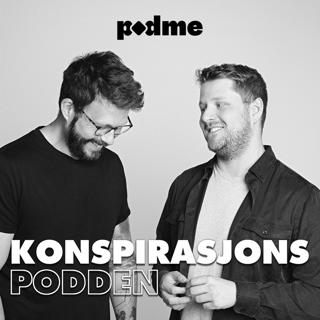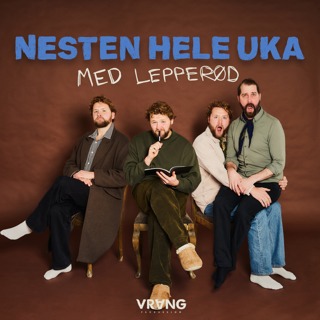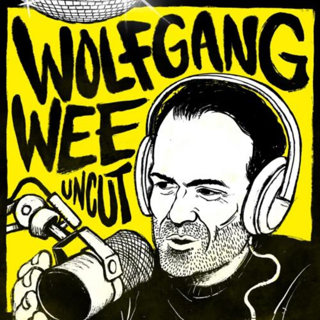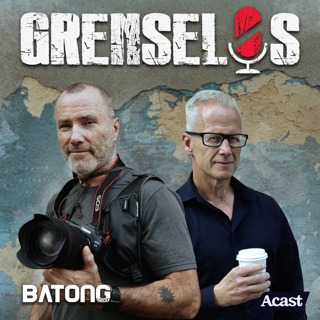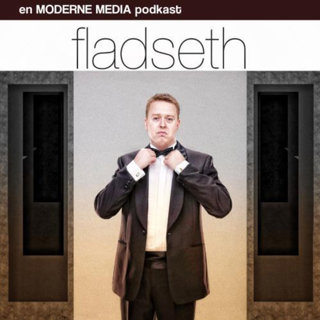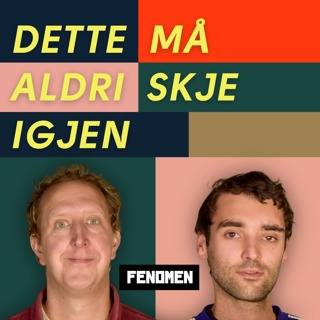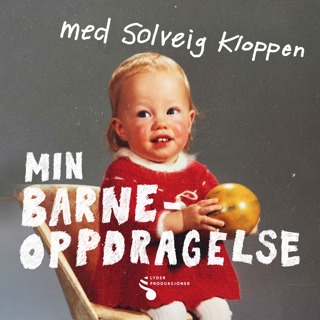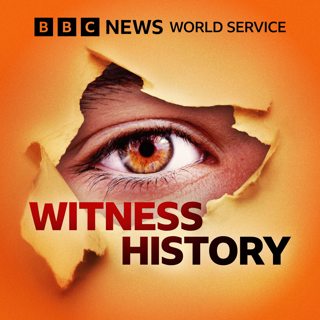
The Truth and Reconciliation Commission of South Africa
Following the abolishment of Apartheid in the 1990s, South Africa had to find a way to confront its brutal past without endangering the chance for peace. But it was a challenging process for many survivors of atrocities committed by the former racist regime. Sisi Khampepe served on the Amnesty Committee of the Truth and Reconciliation Commission, she spoke to Rebecca Kesby in 2018 about how she had to put aside her own emotions and experiences at the hands of the police, to expose the truth about Apartheid. This programme contains contains harrowing testimony and graphic descriptions of human rights violations throughout.Eye-witness accounts brought to life by archive. Witness History is for those fascinated by the past. We take you to the events that have shaped our world through the eyes of the people who were there. For nine minutes every day, we take you back in time and all over the world, to examine wars, coups, scientific discoveries, cultural moments and much more. Recent episodes explore everything from the death of Adolf Hitler, the first spacewalk and the making of the movie Jaws, to celebrity tortoise Lonesome George, the Kobe earthquake and the invention of superglue. We look at the lives of some of the most famous leaders, artists, scientists and personalities in history, including: Eva Peron – Argentina’s Evita; President Ronald Reagan and his famous ‘tear down this wall’ speech; Thomas Keneally on why he wrote Schindler’s List; and Jacques Derrida, France’s ‘rock star’ philosopher. You can learn all about fascinating and surprising stories, such as the civil rights swimming protest; the disastrous D-Day rehearsal; and the death of one of the world’s oldest languages.(Photo: Nelson Mandela and Desmond Tutu at the Reconciliation and Truth commission. Credit: Reuters)
11 Des 11min

The discovery of the coelacanth
In 1938, South African museum curator Marjorie Courtenay-Latimer discovered a coelacanth, a fish that was believed to have been extinct for 65 million years. It is thought to be our ancestor and the missing link between how fish evolved into four-legged amphibians. Produced and presented by Rachel Naylor in collaboration with BBC Archives. Eye-witness accounts brought to life by archive. Witness History is for those fascinated by the past. We take you to the events that have shaped our world through the eyes of the people who were there. For nine minutes every day, we take you back in time and all over the world, to examine wars, coups, scientific discoveries, cultural moments and much more. Recent episodes explore everything from the death of Adolf Hitler, the first spacewalk and the making of the movie Jaws, to celebrity tortoise Lonesome George, the Kobe earthquake and the invention of superglue. We look at the lives of some of the most famous leaders, artists, scientists and personalities in history, including: Eva Peron – Argentina’s Evita; President Ronald Reagan and his famous ‘tear down this wall’ speech; Thomas Keneally on why he wrote Schindler’s List; and Jacques Derrida, France’s ‘rock star’ philosopher. You can learn all about fascinating and surprising stories, such as the civil rights swimming protest; the disastrous D-Day rehearsal; and the death of one of the world’s oldest languages.
10 Des 10min

Dismaland: Banksy's dystopian theme park
In 2015, Banksy turned a derelict swimming pool in Weston-super-Mare, England, into a dystopian theme park which drew huge crowds and Hollywood stars.Working under cover of darkness, the street artist created Dismaland - a 'bemusement park' offering a satirical twist on mainstream resorts.The temporary exhibition featured a fire-ravaged castle, a riot police van sinking into a lake, and Cinderella’s upturned pumpkin carriage.Open for just five weeks, Dismaland sold thousands of tickets daily and injected an estimated £20 million into the local economy.Kurtis Young speaks to Reena Stanton-Sharma about his summer job as a steward at Dismaland.Eye-witness accounts brought to life by archive. Witness History is for those fascinated by the past. We take you to the events that have shaped our world through the eyes of the people who were there.For nine minutes every day, we take you back in time and all over the world, to examine wars, coups, scientific discoveries, cultural moments and much more.Recent episodes explore everything from the death of Adolf Hitler, the first spacewalk and the making of the movie Jaws, to celebrity tortoise Lonesome George, the Kobe earthquake and the invention of superglue.We look at the lives of some of the most famous leaders, artists, scientists and personalities in history, including: Eva Peron – Argentina’s Evita; President Ronald Reagan and his famous ‘tear down this wall’ speech; Thomas Keneally on why he wrote Schindler’s List; and Jacques Derrida, France’s ‘rock star’ philosopher.You can learn all about fascinating and surprising stories, such as the civil rights swimming protest; the disastrous D-Day rehearsal; and the death of one of the world’s oldest languages.(Photo: A mermaid sculpture in front of the fairy castle. Credit: Jim Dyson/Getty Images)
9 Des 10min

The Balcombe Street IRA siege
In December 1975, four members of one of the IRA’s deadliest units were chased by police through the streets of London before hiding out in a small flat owned by a middle-aged couple called John and Sheila Matthews. The resulting six-day siege was covered live on television and radio, and gripped Britain. It ended when Metropolitan Police negotiators persuaded the gunmen to leave the flat peacefully. In 2019, Simon Watts spoke to Steven Moysey who saw the siege unfold.Eye-witness accounts brought to life by archive. Witness History is for those fascinated by the past. We take you to the events that have shaped our world through the eyes of the people who were there. For nine minutes every day, we take you back in time and all over the world, to examine wars, coups, scientific discoveries, cultural moments and much more. Recent episodes explore everything from the death of Adolf Hitler, the first spacewalk and the making of the movie Jaws, to celebrity tortoise Lonesome George, the Kobe earthquake and the invention of superglue. We look at the lives of some of the most famous leaders, artists, scientists and personalities in history, including: Eva Peron – Argentina’s Evita; President Ronald Reagan and his famous ‘tear down this wall’ speech; Thomas Keneally on why he wrote Schindler’s List; and Jacques Derrida, France’s ‘rock star’ philosopher. You can learn all about fascinating and surprising stories, such as the civil rights swimming protest; the disastrous D-Day rehearsal; and the death of one of the world’s oldest languages.(Photo: Police in action on Balcombe Street during the siege. Credit: Evening Standard/Hulton Archive/Getty Images)
8 Des 9min

How Lagos Fashion Week began
In 2011, Lagos Fashion Week debuted, putting Nigerian style on the map. Omoyemi Akerele founded the event which helped to launch the careers of designers internationally.It has grown into a major fashion event and won the 2025 Earthshot Prize for sustainability.In 2023, Omoyemi Akerele spoke to Reena Stanton-Sharma about the first show. Eye-witness accounts brought to life by archive. Witness History is for those fascinated by the past. We take you to the events that have shaped our world through the eyes of the people who were there. For nine minutes every day, we take you back in time and all over the world, to examine wars, coups, scientific discoveries, cultural moments and much more. Recent episodes explore everything from the death of Adolf Hitler, the first spacewalk and the making of the movie Jaws, to celebrity tortoise Lonesome George, the Kobe earthquake and the invention of superglue. We look at the lives of some of the most famous leaders, artists, scientists and personalities in history, including: Eva Peron – Argentina’s Evita; President Ronald Reagan and his famous ‘tear down this wall’ speech; Thomas Keneally on why he wrote Schindler’s List; and Jacques Derrida, France’s ‘rock star’ philosopher. You can learn all about fascinating and surprising stories, such as the civil rights swimming protest; the disastrous D-Day rehearsal; and the death of one of the world’s oldest languages.(Photo: Founder of the Lagos Fashion and Design Week Omoyemi Akerele. Credit: Pius Utomi Ekpei/AFP)
5 Des 10min

Wole Soyinka: Imprisoned during Nigeria’s Biafra war
In 1967, Nigerian writer Wole Soyinka tried to stop the country’s Biafra war, in which Nigeria’s Igbo people responded to violence by seceding from the rest of the country. They proclaimed a new Republic of Biafra.When the fighting began, Soyinka was building a reputation as a poet and playwright abroad. However, in a last-ditch attempt to avert civil war, he set off on a secret mission behind the front line to meet the Biafran leader, Emeka Odumegwu Ojukwu. When he left Biafra, he was imprisoned by the federal government without trial for more than two years.Soyinka drew on his prison experience in his writing over the following years, for which he was awarded the Nobel Prize in Literature in 1986 - the first African to win the award. He looks back on those events with Ben Henderson. Eye-witness accounts brought to life by archive. Witness History is for those fascinated by the past. We take you to the events that have shaped our world through the eyes of the people who were there. For nine minutes every day, we take you back in time and all over the world, to examine wars, coups, scientific discoveries, cultural moments and much more. Recent episodes explore everything from the death of Adolf Hitler, the first spacewalk and the making of the movie Jaws, to celebrity tortoise Lonesome George, the Kobe earthquake and the invention of superglue. We look at the lives of some of the most famous leaders, artists, scientists and personalities in history, including: Eva Peron – Argentina’s Evita; President Ronald Reagan and his famous ‘tear down this wall’ speech; Thomas Keneally on why he wrote Schindler’s List; and Jacques Derrida, France’s ‘rock star’ philosopher. You can learn all about fascinating and surprising stories, such as the civil rights swimming protest; the disastrous D-Day rehearsal; and the death of one of the world’s oldest languages.(Photo: Wole Soyinka in 1969. Credit: Keystone-France/Gamma-Rapho via Getty Images)
4 Des 10min

Escaping Nigeria's Biafra war
When the south-east region of Nigeria declared itself to be the independent state of Biafra, civil war broke out in May 1967. More than a million people died before the fighting stopped. In 2021, Patricia Ngozi Ebigwe, now better known as TV and music star Patti Boulaye, spoke to Paul Waters about escaping the conflict. Eye-witness accounts brought to life by archive. Witness History is for those fascinated by the past. We take you to the events that have shaped our world through the eyes of the people who were there. For nine minutes every day, we take you back in time and all over the world, to examine wars, coups, scientific discoveries, cultural moments and much more. Recent episodes explore everything from the death of Adolf Hitler, the first spacewalk and the making of the movie Jaws, to celebrity tortoise Lonesome George, the Kobe earthquake and the invention of superglue. We look at the lives of some of the most famous leaders, artists, scientists and personalities in history, including: Eva Peron – Argentina’s Evita; President Ronald Reagan and his famous ‘tear down this wall’ speech; Thomas Keneally on why he wrote Schindler’s List; and Jacques Derrida, France’s ‘rock star’ philosopher. You can learn all about fascinating and surprising stories, such as the civil rights swimming protest; the disastrous D-Day rehearsal; and the death of one of the world’s oldest languages.(Photo: Government troops during the Nigerian Civil War, also known as the Biafran War, 1969. Credit: Central Press/Hulton Archive/Getty Images)
3 Des 10min

Building the New Afrika Shrine in Nigeria
It's 25 years since the opening of the New Afrika Shrine, an open-air entertainment centre in Nigeria. A hub for Afrobeat music and culture, it's dedicated to the legacy of Fela Kuti who pioneered the genre.Omoyeni Anikulapo-Kuti, also known as Yeni Kuti, is Fela’s eldest daughter. She speaks to Surya Elango about building the New Afrika Shrine.Eye-witness accounts brought to life by archive. Witness History is for those fascinated by the past. We take you to the events that have shaped our world through the eyes of the people who were there. For nine minutes every day, we take you back in time and all over the world, to examine wars, coups, scientific discoveries, cultural moments and much more. Recent episodes explore everything from the death of Adolf Hitler, the first spacewalk and the making of the movie Jaws, to celebrity tortoise Lonesome George, the Kobe earthquake and the invention of superglue. We look at the lives of some of the most famous leaders, artists, scientists and personalities in history, including: Eva Peron – Argentina’s Evita; President Ronald Reagan and his famous ‘tear down this wall’ speech; Thomas Keneally on why he wrote Schindler’s List; and Jacques Derrida, France’s ‘rock star’ philosopher. You can learn all about fascinating and surprising stories, such as the civil rights swimming protest; the disastrous D-Day rehearsal; and the death of one of the world’s oldest languages.(Photo: Fela Kuti performing. Credit: Frans Schellekens/Redferns)
2 Des 11min






